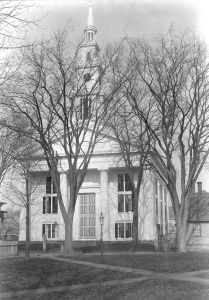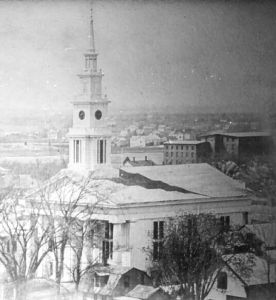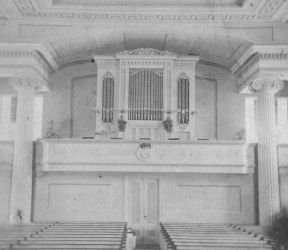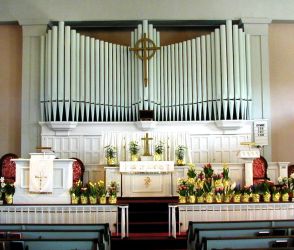

In 1789, Rev. Jesse Lee obtained permission from Bishop Francis Asbury to introduce Methodism into New England. He became a superintendent of circuit riders (itinerant preachers) throughout the region. That same year, Rev. Daniel Smith (one of Lee’s associates) preached the first Methodist sermon in the town of Warren in the home of Samuel Pierce. Lee himself made the first of several visits to Warren in 1790. At that time, the newly formed Warren Methodist society met in the kitchen of the old Job Smith house. The congregation out-grew the Job Smith kitchen in 1792 and moved their meetings to a renovated barn.
In 1794, the society erected a church on a donated plot of land at the site of the present-day church. In September of that year, Jesse Lee returned to Warren for the happy task of dedicating the new 48-foot by 38-foot church building. The society went through some lean times in their first few years. By 1800, the congregation had dwindled to a group of just three very determined women who simply wouldn’t give up hope. By 1805, their numbers strengthened, the society put the church into proper order furnishing it with a pulpit and 48 pews. In 1832, the building was renovated to accommodate a lecture room in the basement and the addition of a tower and steeple.
The original church building was replaced by the present-day structure on the same site in 1845. Its lighted steeple rises 130 feet over the temple portico and serves as a navigational aid for the upper Narragansett Bay; a symbolic reminder that the church exists as an aid for spiritual navigation.
 |
 |
A pipe organ built by Simmons of Boston was installed in the gallery at the back of the sanctuary and a one-ton bell was placed in the tower in 1855. In 1907, the present pipe organ, built by Steere Company of Springfield, was installed in the front of the sanctuary where it remains to this day.
 |
 |
The church has weathered many storms including a 1914 wind storm that damaged the spire, the hurricane of 1938, and a fire in 1960 that damaged the lower level and parts of the sanctuary. Likewise, the congregations who have walked its halls, have seen the hard times as well as the revivals. For 200 years, by the grace of God, we have persevered and celebrated.